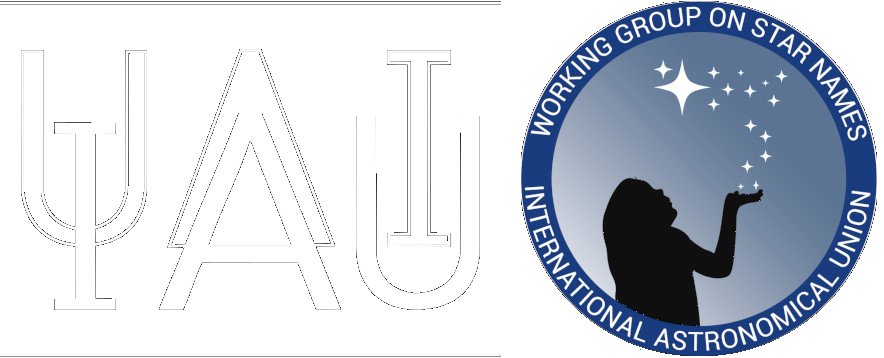Lepus
One of the 88 IAU constellations.
Etymology and History
Alongside Andromeda and Perseus, the group around Orion forms the second mythological constellation complex. It is said to depict a hunting scene. The hare is pursued by one or two hounds of Orion. This is how it can be seen in the sky: The hare stands to the west of the constellation of the Great Dog, so it rises before it and runs in front of it the whole time during the night.
Origin of Constellation
Babylonian
The constellation has no Babylonian origin, because in Mesopotamia there was the constellation of the Rooster (DAR.LUGAL) in this position.
MUL.APIN was copied throughout the -1st millennium, so presumably continued to be used in Babylonian astronomy. It is therefore unclear when and where the transformation from the rooster to the hare took place. It is quite possible that the hare was a separate Greek constellation or originated from another conquered civilisation.
Greco-Roman
Aratus
Under the two feet of Orion the Hare is hunted constantly all the time: Sirius moves for ever behind it as if in pursuit, [341] rises after it and watches it as it sets. (Kidd 1997)
Eratosthenes
Hipparchus
Hyginus, Astronomica
The hare is said to be fleeing the dog of the hunter Orion, for when, as was proper, they represented Orion as a hunter, they wanted to indicate what he was hunting, and so they put the fleeing hare at his feet. Some say that it was put there by Mercury, and that it had been given the faculty, beyond other kinds of quadrapeds, of being pregnant with new offspring when giving birth to others. Those who disagree with this reason say that so noble and great a hunter as Orion (we spoke about him in the discussion of Scorpio) shouldn't be represented hunting hares. Callimachus, too, is blamed, because, when he was singing the praises of Diana, he said she delighted in the flesh of hares and hunted them. So they have represented Orion fighting the Bull. The following story of the hare has been recorded. There were no hares on the island of Leros, and a certain young man of the state, led by a liking for the breed, brought in from another country a pregnant female, and watched over her very carefully as she bore her young. When she had borne them, many of the citizens developed an interest, and by acquiring some for money, some as gifts, they all began to raise hares. In no long time such a multitude of hares was produced that the whole island was swarming with them. When men gave them nothing to eat, they made inroads on the grain fields and devoured everything. The inhabitants, faced with disaster because of this, since they were reduced to hunger, by co-operation of the whole state were said at length to have driven them from the island, through with difficulty. So afterwards they put the image of a hare in the stars, that men should remember that there was nothing so desirable in life but that later they might experience more grief than pleasure from it. (Mary Ward 1960)
Geminos
Almagest Λαγωός
| id | Greek (Heiberg 1898) | English (Toomer 1984) | ident. |
|---|---|---|---|
| Λαγωοῦ ἀστερισμός | constellation of the Hare | ||
| 1 | τοῦ κατὰ τῶν ὤτων τετραπλεύρου τῆς ἠγουμένης πλευρᾶς ὁ βόρειος. | The quadrilateral just over the ears: the northcrn star an the advance side | iot Lep |
| 2 | ὁ νότιος τῆς ἠγουμένης πλευρᾶς | The quadrilateral just over the ears: the southern star on the advance side | kap Lep |
| 3 | τῆς ἐπομένης πλευρᾶς ὁ βόρειος | The quadrilateral just over the ears: the northern star on the rear side | nu Lep |
| 4 | ὁ φότιος τῆς ἐπομένης πλευρᾶς | The quadrilateral just over the ears: the southern star on the rear side | lam Lep |
| 5 | ὁ ἐῃ τῷ γερείῳ. | The star in the cheek | mu Lep |
| 6 | ὁ ἐπὶ τοῦ ἐμπροσθίου ἀριστεροῦ ἀκρόποδος | The star on the left front foot | eps Lep |
| 7 | ὁ ἐν μέσῳ τῷ σώματι | The star in the middle of the body | alf Lep |
| 8 | ὁ ὑπὸ τὴν κοιλίαυ | The star under thc bellv | bet Lep |
| 9 | τῶν ἐν τοῦς ὀπισθίοις ποσὶο β ὁ βορειότερος | The northernmost of th~ 2 stars in the hind legs | del Lep |
| 10 | ὁ νοτιώτερος αὐτῶν | Thc southcrnmost of them | gam Lep |
| 11 | ὁ ἐπὶ τῆς ὀσφύος. | The star on the rump | zet Lep |
| 12 | ὁ ἐπ’ ἄκρας τῆς οὐρᾶς | The star on the tip of the tail | eta Lep |
| all | ἀστέρες ἰβ, ὧν γ μεγέθους β, δ’s, ε' δ | {12 stars, 2 of the third magnitude, 6 of the fourth, 4 of the fifth} |








